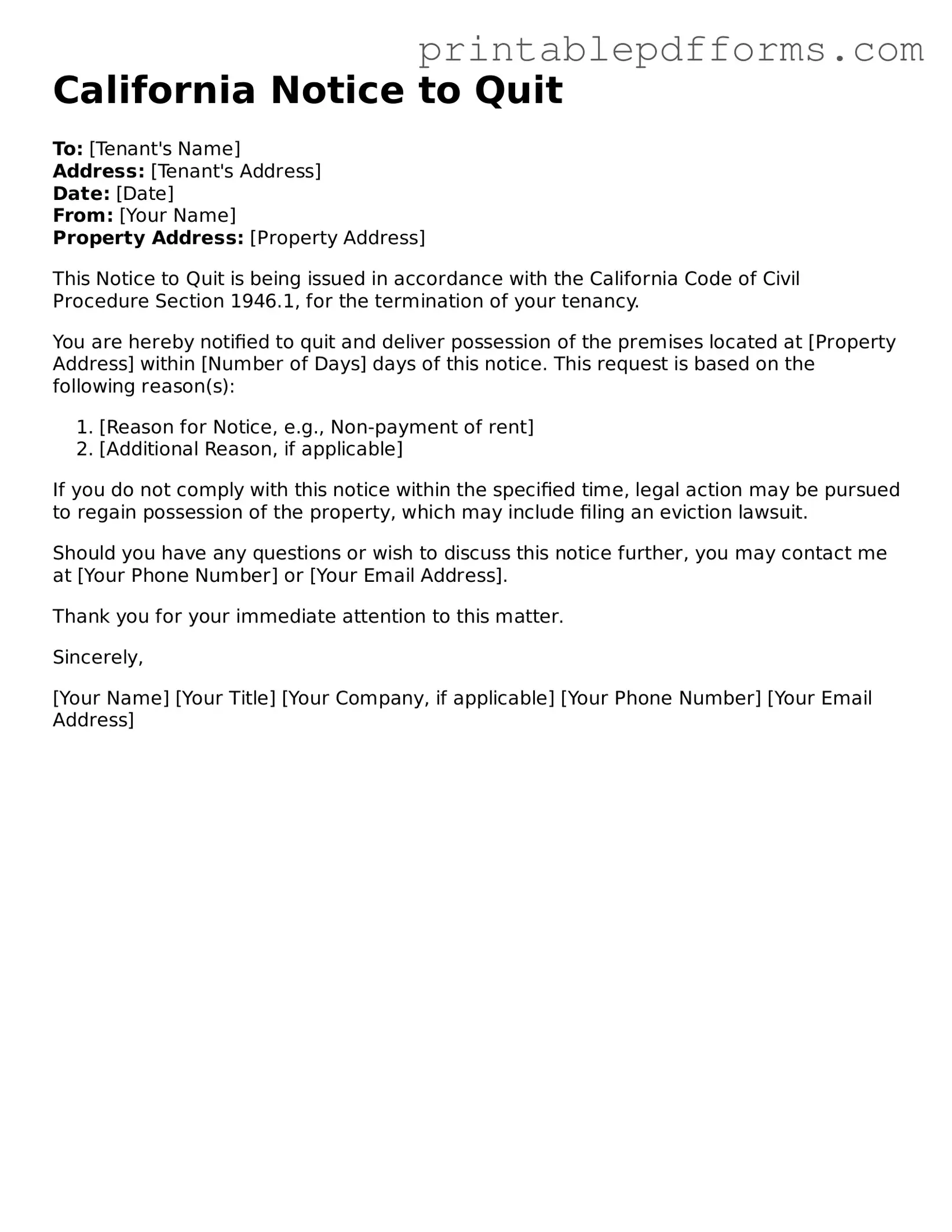California Notice to Quit Document
The California Notice to Quit form is a legal document used by landlords to inform tenants that they must vacate the rental property. This notice serves as a formal request for the tenant to leave, typically due to lease violations or failure to pay rent. Understanding this form is crucial for both landlords and tenants to ensure compliance with state laws.
Ready to fill out the form? Click the button below to get started.
Create This Document Online
